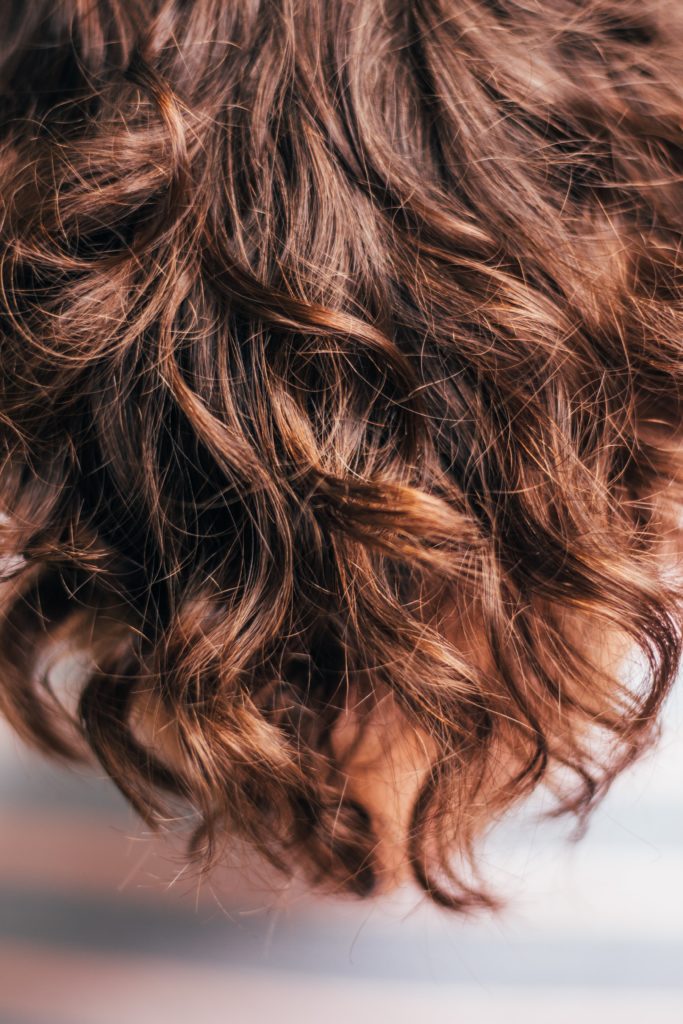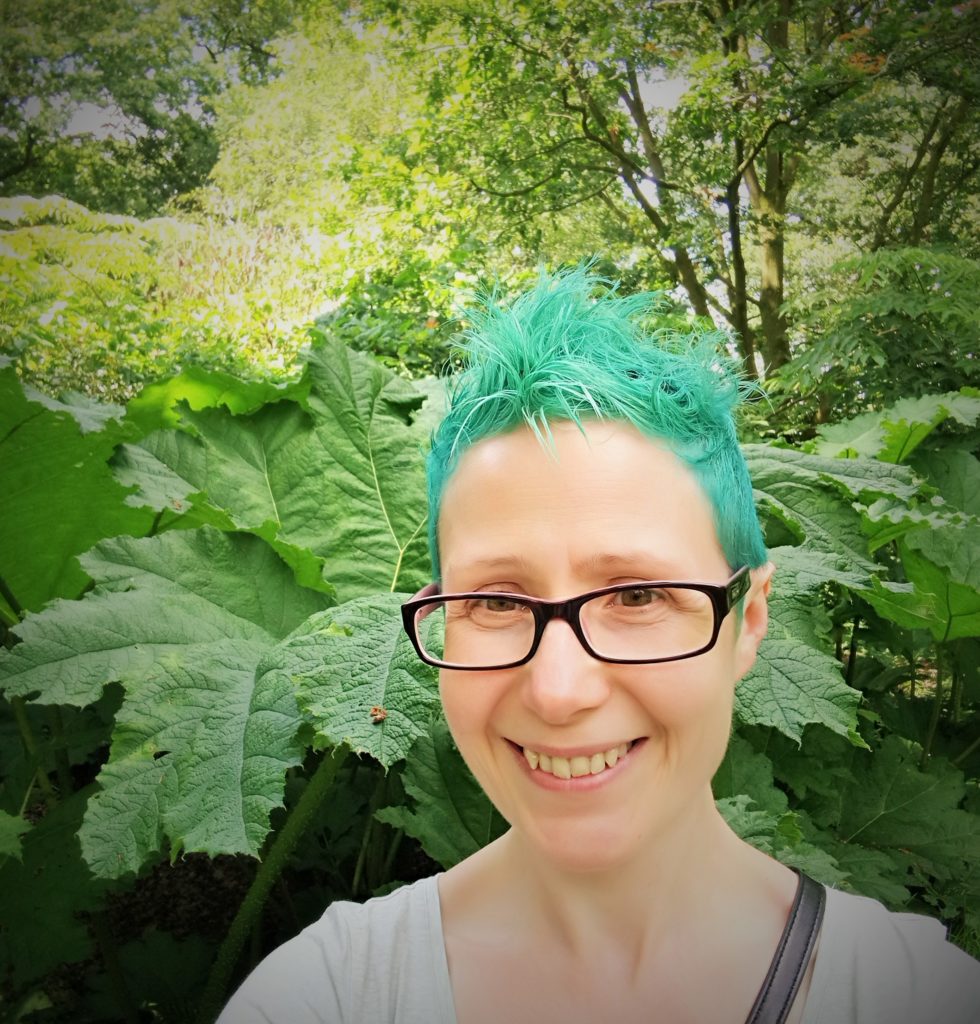Have you ever changed hair color and found strangers or colleagues treating you differently? What about those magazine articles about what your hair color says about you? Haircare giant Schwartzkopf has several articles on its website, which lightheartedly take readers (aka potential customers) through several different “archetypes” associated with men’s perceptions around women’s hair color (presumably so that we can choose which flavor of male fantasy we want to be, before buying their hair dyes!). In a nutshell, the main stereotypes I’ve found are:
- Blonde hair = naivety, instability, comfort with risk-taking, attractive youthfulness
- Brown hair = intelligence, warmth, security, and reliability
- Red hair = historically seen as a sign of witchcraft, therefore “dangerous”; nowadays apparently indicates “sensuality,” energy and modernity. According to Schwartzkopf, “redheads like to be noticed” too
- Black hair = “hot-blooded,” exotic, mildness, and melancholy – Schwartzkopf says that this is a hair color (read: male fantasy) that men find especially exciting…

Does having this color hair make you more intelligent and trustworthy?
I grew up in the 1980s and 1990s in a place where stereotypes around hair color (most often, around blond hair) were still prevalent. But to me and my friends, they just seemed to be an outdated and irrelevant hangover from the 1970s, so we never really took them seriously. Yes, they were annoying and stupid (like the comments you’d hear when walking past a building site), but to me and my friends, it seemed a non-threatening part of the old-fashioned attitudes we believed were firmly on their way out—they seemed like a bad joke in those modern, changing times!
Gender differences in attitudes towards hair color
When I was about 14 and I chose to dye my hair red, I started getting compliments from women. Men commented that I’m a “fiery redhead,” joking that they’d have to “watch out” for me (as though I were dangerous or a threat—hello medieval attitudes…). Honestly, at that painful age, it actually made me feel noticed as a person, which to a young me was close to a feeling of empowerment, at a time where I ached for respect and was desperate to be seen for who I was. Back then, I’d rather have people interested in talking to me, even if it was only on the shallow basis of my choice of hair color, rather than for any of my real qualities as a person.
Looking back, the massive difference between the comments I got from men and those from the women, is clear as day! The women would genuinely engage with me about the aesthetics of the look I’d chosen, and share stories of dyeing their hair. It felt like a rite of passage: I was being included in their grown-up social circle, and I loved that. In stark contrast, the men’s immediate jump into projecting what are (let’s be frank) effectively male fantasy stereotypes onto me as a 14-year old, feels creepy and icky. If I saw someone objectifying a 14-year old in the same sort of way today, I wouldn’t hesitate to give them a piece of my mind! But for some reason, although it felt awkward and weird, when it was happening to me at that age, I just brushed it aside as those men being stupid, because they didn’t “get” what it was really about.

A danger sign, or simply aesthetically beautiful tresses?
According to several studies, hair color prejudice mainly seems to be founded in heterosexual males’ perception and judgments of women. An article by Dr Raj Persaud and Peter Bruggen tells about a “massive consensus” in terms of prejudice as to which hair color is preferable, which may be severe enough to “border on racial discrimination”! They cite several academic studies, including one by Nicolas Guéguen from the Université de Bretagne-Sud (in France), in which he carried out a series of social experiments.
In Guéguen’s experiment, the same female participants sat in nightclubs each wearing 4 differently colored wigs on different nights. This indicated a strong preference toward blond women (nearly 40%) while women with red hair received significantly fewer approaches (only 9%). So the same women’s attractiveness was judged radically differently by men in the same area, purely on the basis of their hair color! In another study in the UK, one woman participant with naturally brown hair dyed her hair blonde and red, and went into several nightclubs to see the differences in reaction: 60 men approached her with blonde hair, 42 with brown hair, and 18 with red hair.
But do we women also discriminate against men on the basis of hair color? Well, according to Guéguin’s study, there was a female prejudice against courtship requests from red-headed men—but it was less extreme than in males (around 5% more women responded positively to redheaded men, than men did to the redheaded female participants). There was no strong preference shown by women towards blond, brown or black hair in male test subjects.
And in other studies mentioned by Persaud and Bruggen, hair color was found not to influence female drivers who stopped to offer lifts to hitch-hikers—as opposed to the male drivers, who were more likely to stop for female, blonde hitch-hikers (well color me surprised!). So it would seem that while some of this male habit has rubbed off on us, discrimination on the basis of hair color is a lot less widespread, and less codified in women’s psyches and social habits.
The UK study also looked at the attitudes of men around the same nightclub, with male participants approaching men to see which photo of the participant with the various hair colors they found most attractive, and to measure other impressions of her. According to the results, the men surveyed saw the woman as being most attractive with brown hair, despite the overwhelmingly higher number of approaches she received with blond hair. They also apparently perceived the participant as more “needy” when she was blond, more arrogant,\ and intelligent when brunette, and “less shy” and more sexually promiscuous with red hair! And this surprising attitude seems not to be limited to this study either—other studies have also concluded that women with blond hair are perceived as more “needy,” which encourages men to make approaches more confidently. Those studies postulate that this is likely to be because they feel less likely to be rejected, and feel more dominant over the women they approach.
And now we’re into a whole new level of stereotyping—one which feels darker to me, somehow. The fact that the men surveyed drew these sorts of conclusions, which I would describe as debasing, objectifying, and frankly, bordering on sinister, takes the tone of the subject back over into the creepy zone of projecting male fantasies onto women (and girls) they perceive as vulnerable. The idea that some men target women on the basis of gaining an advantage over them due to a perception that they’re weaker, feels outright predatory. And the fact that this sort of judgement is ludicrously flawed, beyond disrespectful, and misogynistic, as well as being on the basis of no evidence whatsoever, is beside the point. The fact that these men were projecting imaginary traits onto a person they didn’t know, and that they would make an approach on the basis of their fantasy, seems like the thin end of the wedge of rape culture. I’m sure there are plenty of people who would tell me that I’m overreacting, but I really feel this sort of attitude/behavior is dangerous, and needs to be challenged—and I think it needs feminist men to challenge these attitudes with other men, when they encounter them!
Career path implications
Could your hair color (natural or otherwise) be affecting your career prospects too? Given the tendency we’ve seen for people to wildly infer qualities and behaviors in people, on no more solid evidence than their hair color? I’m sorry to say, the answer seems to be yes. This study analyzed the hair colors of CEOs of the top 500 FTSE companies. According to the analysis, blond people (stereotyped as less intelligent) were under-represented in leadership roles, while red-haired people were over-selected for CEO roles.
Although according to this article, over-selection of red-haired people for CEO roles only applies to males (apparently perceived as less socially amenable, but viewed as highly competent), whereas black-haired women are more likely to be selected as CEO. This fits in with the stereotype of the mild, exotic woman. Hardly surprising, then, that the article states that “weighing 25 lbs below average is worth over £250,000 over a female leader’s career,” and “thin eyebrows, full lips and wide eyes help women get ahead”!
Male CEOs, on the other hand, are apparently predominantly heavy-set, tall, and have a pronounced forehead. In other words, males selected to be CEOs are physically imposing, whereas women selected to be CEOs tend to have physical characteristics associated with physical attractiveness and being subservient. This double standard is borne out by this article, on views about leadership traits, which shows that Americans see different leadership traits as being beneficial to men than those which are beneficial to women.

Does your hair color affect your chances, during a job interview?
So should hair color (and other physical features) be covered by anti-discrimination law? And how else can we challenge these biases, when they seem to be entrenched in so many people’s attitudes? A part of their unconscious bias is negatively impacting diversity in recruitment, and training is failing to address it. I don’t have the answers, I’m afraid. But I’m inclined to think that discrimination thrives when it’s overlooked and minimized, and when people accept it as a fact of life. If more of us were to bring it out into the light and talk about it, perhaps it will become more visible. Could we maybe solve it together, by raising people’s awareness? I’d like to think so.
So what about non-natural hair colors?
Given the long-standing prejudices and archetypes associated with “natural” hair colors, how does the relatively recent world of “crazy color” hair dyeing—pastels, vivid blues, purples, greens, and neons—affect how people are treated? I’ve encountered a widespread perception that many employers would not tolerate non-natural hair colors in their staff. But is this something that employers ought to be able to interfere in or dictate, such as dress codes? Or should hair color be considered a human right, as our choice of hairstyle is an intrinsic part of our identities?
There doesn’t seem to be a great deal of research on the subject of non-“natural” hair colors yet, but speaking as someone who has been experimenting with unconventional hair colors for the last 2 years, I can report marked differences in how I’m treated by strangers and differences between reactions to my hair, and also when traveling in different countries. A friend of mine has also commented on similar experiences with vivid colors. So here are my anecdotal findings:
A couple of years ago, I had my hair dyed pillar box red with a flash of purple. That would get lots of attention from kids, who would sometimes ask their mothers loudly if they could have “red-red hair” in the queue at the supermarket (much to their mothers’ embarrassment)! When my partner took me to Prague (what an awesome place—a real vegan paradise) for the weekend to propose, I got some pretty disparaging looks from middle-aged women on the streets, but big smiles from middle-aged and older men!
In Jamaica (my hair color had faded to a pastel pink/purple by that stage), I got the most wonderfully positive reactions from people (men and women), who loved my color, thought it was unique, and cool (no creepy remarks there)!

Green hair – don’t care!
When I switched to absinthe green with a flash of aquamarine (we’re talking total mermaid hair), I immediately started getting shocked/horrified looks from adults (we’re talking fully open-mouthed stares in a crowded elevator), and intrigued stares from 5 to 10-year-old boys. My friend also reported having some quite outspoken (bordering on rude) reactions when she’d got green hair as well.
But then, I moved to deep violet/blue with a flash of forest green, and that’s the point at which strangers in shops would stop me to tell me how happy my hair color made them! I think these shades must resemble a super-hero/cartoon character, because I get the most heart-warming wide-eyed delighted smiles and stares from kids of all ages too. It does give me a lovely warm, fuzzy lift to get positive reactions from others, and to see that my hair color can make other people happy, as well as myself.
But even when I’ve had colors that others clearly disapproved of, that’s okay, because for me, hair color is a form of self-expression, and it’s a personal choice—no matter what other people may think of it (or me) because of that, and I still get the warm fuzzies when I do my hair in the morning! There will always be some people who treat others differently, solely on the basis of their appearance, but for me, as I’ve never really fit into the mainstream, being my different, quirky, eccentric self is something that I brings me joy, and is something I celebrate every day.
Also by Ema: GF Vegan Chickpea Vanilla Pancakes
Related: What Being Korean Taught Me About Self-Image
Get more like this—Sign up for our daily inspirational newsletter for exclusive content!
__
Photo: Unsplash; Ema




